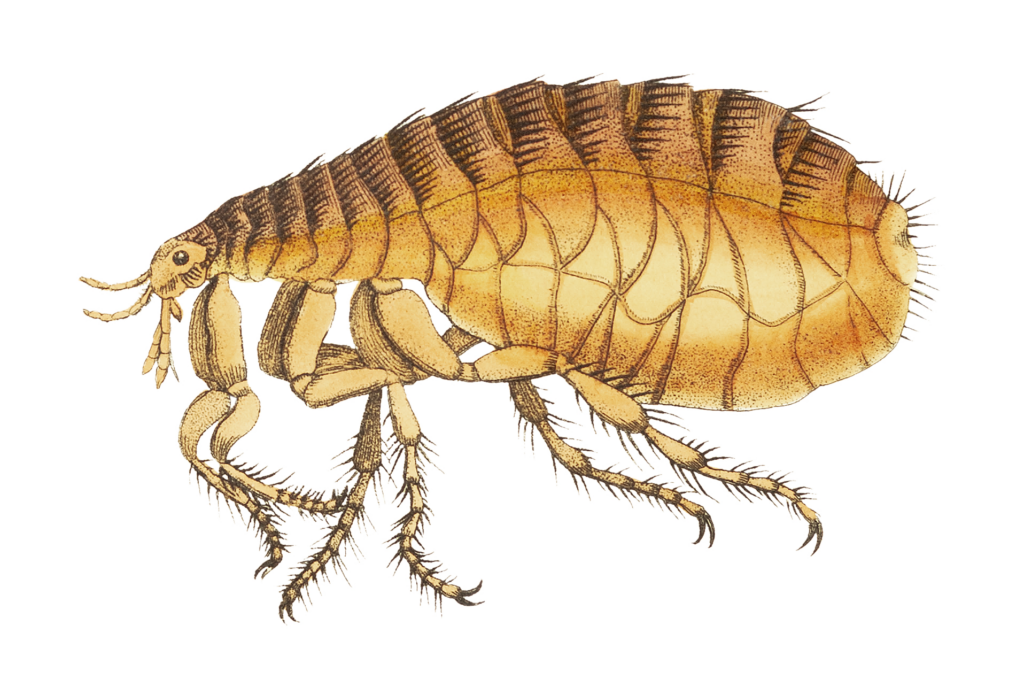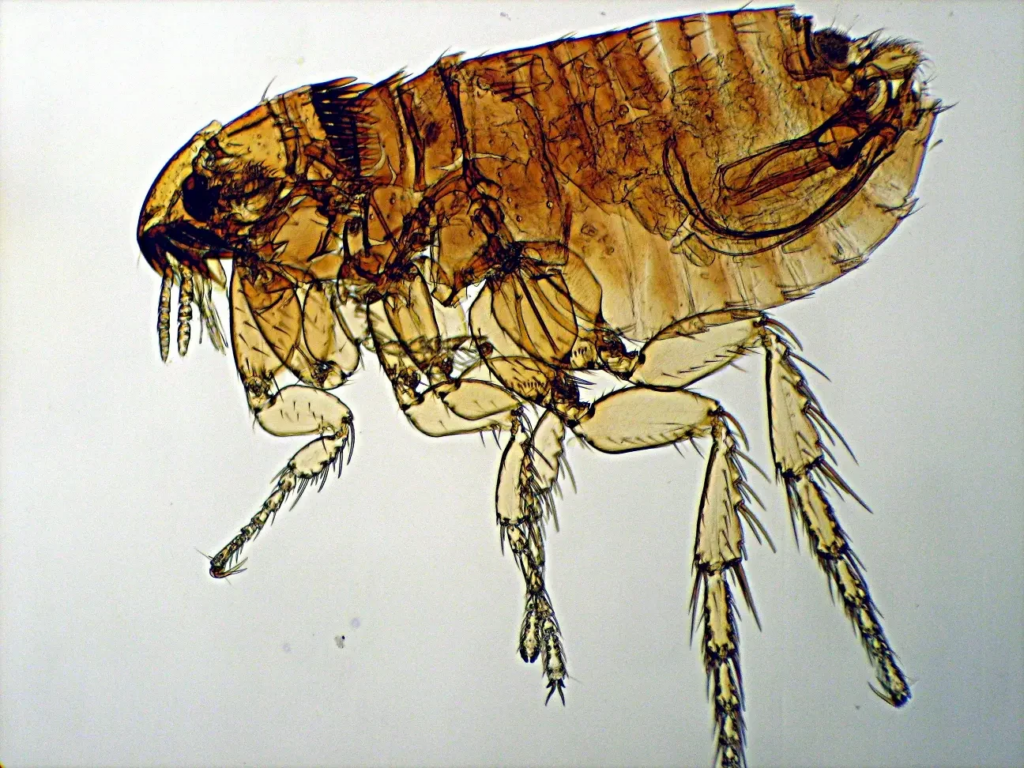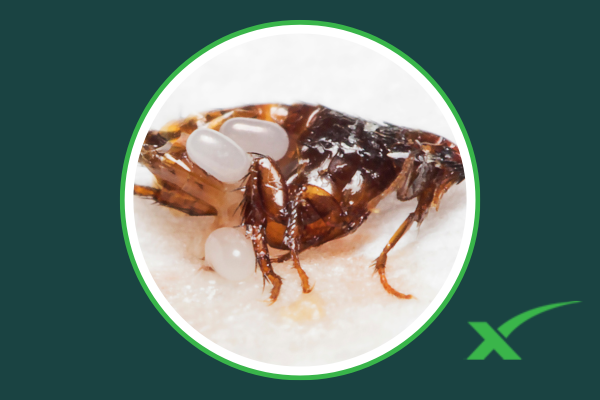At Vinx Pest Control, we know flea infestation is a big problem. It makes you and your family uncomfortable and can be harmful to your health.
Fleas have been a big issue for humans for a long time. They can cause allergic reactions and spread diseases.
It’s important to know when to call an exterminator to solve the problem. We will help you find the best way to get rid of fleas. This way, you can take back control of your home.
Key Takeaways
- Identify the signs of flea infestation
- Understand the health risks associated with fleas
- Learn when it’s time to call a professional exterminator
- Discover how Vinx Pest Control can help
- Explore effective flea extermination methods
The Growing Threat of Fleas in American Homes
Fleas in American homes are a big problem. They are not just a small issue. They can harm pets and people. Over 2,000 types of fleas exist, and the cat flea is the most common in North America.
Common Types of Fleas in the United States
The cat flea is the main flea problem in the U.S. It infests homes and pets. It also bothers humans. For more info on pests in different places, check our page on pests in Greenville, Dallas, and Charleston.
Why Fleas Are More Than Just a Nuisance
Fleas carry diseases and can make pets and people sick. They can give pets tapeworms and cause skin problems. Bites can also lead to infections from scratching too much. Fleas are a serious problem that needs quick action.

Identifying a Flea Infestation: Key Warning Signs
It’s important to know the signs of a flea infestation. This helps you and your pets stay safe and healthy.
Visual Evidence of Fleas in Your Home
Looking for fleas is a simple way to spot an infestation. You can see them or signs of their presence.
Spotting Fleas on Pets and Furniture
Fleas are tiny, dark, and move in your pet’s fur or on furniture. They like places where pets sleep.
Identifying Flea Dirt and Eggs
- Flea dirt looks like small, dark specks. It’s often on pets or in their bedding.
- Flea eggs are white, oval, and about 0.5 mm long. They’re found in carpets, pet beds, and on furniture.
Behavioral Changes in Pets Suffering from Fleas
Pets with fleas scratch, bite, or lick themselves a lot. This makes them restless and can change their appetite or behavior.
Human Reactions to Flea Presence
Flea bites on humans look like small red bumps with red haloes. If you or your family get these bites, you might have fleas. To get rid of fleas, treat your pets, home, and yard well.
Understanding the Flea Life Cycle and Why It Matters
Knowing how fleas grow is key to getting rid of them. Fleas go through four main stages. Understanding these stages helps us fight fleas better.

The Four Stages of Flea Development
A flea’s life has four parts: egg, larva, pupa, and adult.
- Eggs are laid on the host but can fall off into the environment.
- Larvae come from eggs and eat organic stuff.
- Pupae are where larvae turn into adult fleas.
- Adult fleas then start the cycle again.
Why Complete Elimination Is Challenging
Getting rid of fleas is hard because of their life cycle.
Hidden Eggs and Larvae
Eggs and larvae hide in carpets, bedding, and more. This makes them hard to find and treat.
Flea Pupae Resistance to Treatment
Flea pupae are hard to kill because they’re in a cocoon. Even after treatment, new fleas can come from these pupae.
Knowing these challenges helps us make a good plan to get rid of fleas. We need to tackle the whole life cycle to succeed.
Health Risks Associated with Flea Infestations
Flea infestations are bad for both humans and pets. They can cause mild discomfort or serious health problems.

Diseases Transmitted by Fleas to Humans
Fleas can spread diseases like typhus and tapeworms to humans. These diseases can be very serious if not treated. Typhus causes fever, headache, and rash. Tapeworms can make you lose weight and have digestive problems.
Pet Health Complications from Fleas
Pets can also get sick from flea bites. They might get flea allergy dermatitis or anemia. Keeping pets free from fleas is very important for their health. Flea allergy dermatitis makes pets very itchy and can hurt their quality of life.
Allergic Reactions and Skin Conditions
Humans and pets can have allergic reactions to flea bites. This can cause skin irritation and discomfort. In bad cases, it can lead to serious skin problems. It’s very important to deal with flea infestations quickly to avoid these issues.
DIY Flea Control: What Works and What Doesn’t
Flea infestations can be really frustrating. Many people try DIY flea control methods. But, not all of these methods work well.
Over-the-Counter Flea Products
OTC flea products are a common first choice. They come in many forms.
Topical Treatments for Pets
Topical treatments for pets can kill fleas. Brands like Frontline and Advantix are popular.
Home Sprays and Powders
Home sprays and powders are also used. But, they might not work as well without other methods.
Natural and Home Remedies for Fleas
Some people use natural and home remedies. Diatomaceous earth and essential oils are examples. But, their effectiveness is not always proven.
Common Mistakes in DIY Flea Treatment
One big reason DIY methods fail is incomplete treatment. Flea infestations need treatment for pets and the home.
To make DIY flea control work, know the flea life cycle. Also, treat all areas where fleas might be.
7 Clear Signs It’s Time to Call a Professional Flea Exterminator
Fleas are more than pests; they can harm your health. Knowing when to call a pro is key. Spotting signs of a bad flea problem is important.

Persistent Infestations Despite Multiple Treatments
Trying many flea treatments without success means it’s time for a pro. Fleas can keep coming back if not all life stages are treated.
Widespread Infestation Throughout Your Home
Fleas in many home areas mean a big problem. Experts have the tools and know-how to fix it.
Homes with Vulnerable Residents
Infants, elderly, or those with weak immune systems should get pro help. Fleas can spread diseases that are very dangerous for them.
Multi-Pet Households Facing Severe Infestations
Many pets in a home can lead to big flea problems. Experts can find the best way to solve it.
Recurring Flea Problems Season After Season
Yearly flea troubles mean it’s time for a pro. They can find and fix the ongoing issue.
In short, knowing when to call a flea exterminator saves time and health risks. By recognizing these signs, you can start getting rid of fleas for good.
What to Expect from Professional Flea Extermination Services
When you choose professional help for fleas, know what to expect. These services aim to solve flea problems fully. They make sure your home is safe from fleas for good.
The Initial Inspection and Assessment
The first thing is a detailed check of your home. Technicians look at your home and pets to see how bad the problem is. They then plan the best way to fix it.
Advanced Treatment Methods Used by Professionals
Experts use better methods than store-bought stuff. They include:
- Special treatments for where fleas like to be
- Tools to get to fleas hiding in hard spots
Indoor Treatment Protocols
Inside, they use sprays, powders, and medicine for pets. They treat places pets like and other spots fleas might be.
Outdoor Perimeter Treatments
They also treat outside your home. This makes a barrier to keep fleas out.
Safety Measures and Precautions During Treatment
Experts care about your safety. They tell you what to do, like leaving the house or keeping pets away.
The Vinx Pest Control Approach to Eliminating Fleas
At Vinx Pest Control, we know how annoying fleas can be. We’ve made a special plan to get rid of them. Our goal is to make sure your home stays flea-free.
Our Comprehensive Flea Treatment Protocol
We start by checking your home for fleas. This helps us know how bad the problem is. Then, we make a plan just for you.
We use special methods and products to kill fleas. We treat all areas where fleas might be. This stops them from coming back.
Pet-Safe and Family-Friendly Treatment Options
We care about your family and pets. That’s why our treatments are safe for everyone. They work well against fleas without harming your loved ones.
Follow-up Services and Guarantees
We’re sure you’ll be happy with our work. We offer:
- Regular visits to check if fleas are gone.
- Watching for fleas to come back early.
Monitoring for Reinfestation
Our team will keep an eye on your home. They’ll catch any flea problems fast.
Our Satisfaction Guarantee
We promise you’ll be happy with our service. If not, we’ll fix it for you.
Choosing Vinx Pest Control means you get a partner. We’re here to keep your home flea-free.
Cost Analysis: DIY vs. Professional Flea Extermination
Knowing the cost difference between DIY and professional flea extermination is key. DIY might seem cheaper at first. But, it can cost more in the long run because of the time and effort needed for repeated treatments.

The Hidden Costs of Repeated DIY Treatments
DIY flea treatments can mean spending a lot on products and time. You also have to clean up after. If these treatments don’t work, you might face more costs. This includes money for pet care, replacing items, and health issues from flea bites.
- Cost of multiple DIY product purchases
- Time and labor for application
- Potential health and pet care costs due to prolonged infestation
Understanding Professional Flea Control Pricing
Professional flea extermination might cost more at first. But, it gives a complete solution to the problem. Prices change based on how bad the infestation is, the size of your home, and the treatment used.
Long-term Value and Peace of Mind
DIY might help for a little while, but pros offer lasting solutions. They make sure fleas are gone for good. This means less worry about future problems and costs.
Preparing Your Home for Professional Flea Treatment
Before the pros come to fight fleas, you can do some things. Getting ready is important. It helps the treatment work better and keeps fleas away.
Pre-Treatment Checklist for Homeowners
To get your home ready for flea treatment, follow this checklist:
Indoor Preparation Steps
- Vacuum all carpets, rugs, and furniture, where pets like to hang out.
- Wash and dry your pet’s bedding, toys, and anything you can wash.
- Clear clutter and organize storage to let the treatment reach everywhere.
- Take out food, dishes, and pet bowls to avoid getting in the way.
Pet Preparation Requirements
- Bathe your pets as the pest control pros tell you to.
- Remove pet toys, beds, and bowls from the treatment area.
- Keep your pets away from treated areas until it’s safe for them to go back.
During-Treatment Protocols
When the treatment is happening, follow what the pros say. This might mean:
- Leaving the house for a bit.
- Staying away from treated areas until it’s okay to go back.
- Keeping windows and doors closed like they tell you to.
Post-Treatment Care and Monitoring
After the treatment, watch for fleas and do what the pros say. This could be:
- Vacuuming often to get rid of dead fleas and eggs.
- Washing your pet’s bedding again.
- Doing more treatments if the pros say so.
Preventing Future Flea Infestations After Treatment
To keep your home and pets flea-free, you need to take steps to prevent fleas. After getting rid of fleas, you don’t want them to come back. By taking care of your home and pets, you can avoid the trouble and discomfort of fleas.

Year-Round Pet Flea Prevention Strategies
Keeping your pets flea-free all year is key. Use flea control products that your vet recommends. This can be topical treatments, oral meds, or flea collars. Also, check your pets often for fleas to catch any early.
Home Maintenance Practices to Deter Fleas
Keeping your home clean is important to stop fleas. Vacuum often, wash your pet’s bedding, and keep your home tidy. These steps can help a lot in preventing fleas.
Yard and Outdoor Area Management
It’s also important to manage your yard and outdoor spaces. Fleas like shady, moist spots with lots of debris. Make your yard less welcoming to fleas to lower the risk of infestation.
Landscaping Tips to Reduce Flea Habitats
- Keep your lawn well-manicured and dry.
- Remove debris and clutter from your yard.
- Trim back bushes and trees to reduce shade.
Wildlife Management Considerations
Wild animals like rodents and raccoons can bring fleas to your yard. Keep trash cans closed, remove food, and use deterrents. This can help keep fleas away from your home.
Conclusion: Taking Back Control from Fleas
Getting rid of fleas needs a full plan. This includes knowing how fleas live, spotting them early, and using the best treatments. At Vinx Pest Control, we say fighting fleas is more than just treating pets. It’s also about making sure your home is flea-free.
We talked about the dangers of fleas and the problems with trying to control them yourself. Our professional services offer a solid solution. We use advanced treatments and safety steps to protect your family and pets.
Choosing Vinx Pest Control is your first step to a flea-free home. Our detailed flea treatment plan and focus on safe options for pets and families mean you can live without pests. We urge you to get professional help to fight fleas and stop them from coming back.
FAQ
Q: What are the most common signs of a flea infestation in my home?
A: You might see fleas or their dirt on pets or in your home. Look for signs in places pets like to go. Also, if people or pets get bitten, it could be fleas.Another sign is if pets scratch or chew at their skin a lot.
Q: How can I identify flea eggs in my home?
A: Flea eggs are tiny, white, and oval. They’re found where adult fleas are, like on pet beds or in carpets. But, they’re hard to see without looking closely.
Q: Are fleas a health risk to humans and pets?
A: Yes, fleas can spread diseases like typhus and tapeworms. Their bites can also cause allergies and skin problems. So, they’re a big health risk.
Q: Can I get rid of fleas on my own, or do I need professional help?
A: For small flea problems, DIY methods might work. But, big or ongoing problems need a pro. They make sure all fleas are gone and won’t come back.
Q: What are some common mistakes people make when trying to control fleas on their own?
A: People often miss treating all flea areas or don’t use products right. Not following instructions can lead to fleas coming back.
Q: How can I prepare my home for professional flea treatment?
A: Clean and declutter your home first. Wash and dry pet bedding. Your exterminator will give you a list of things to do before treatment.
Q: Are professional flea extermination services safe for my pets and family?
A: Yes, good pest control services use safe products. They also take steps to keep you and your pets safe during treatment.
Q: How can I prevent future flea infestations after treatment?
A: Keep using flea prevention on pets all year. Check your home for fleas often. Keep your home and yard clean to stop fleas.
Q: What is the cost of professional flea extermination compared to DIY methods?
A: Professional services might cost more upfront. But, they ensure fleas are gone for good. They also help you avoid future problems.
Q: How long does it take to completely eliminate a flea infestation?
A: It depends on how bad the infestation is and the treatment. Professional services usually work faster than DIY methods.
Q: Can I use natural flea remedies as part of my flea control strategy?
A: Yes, natural remedies can help. But, they might not work as well as other methods. They’re good for small problems or as a prevention.



